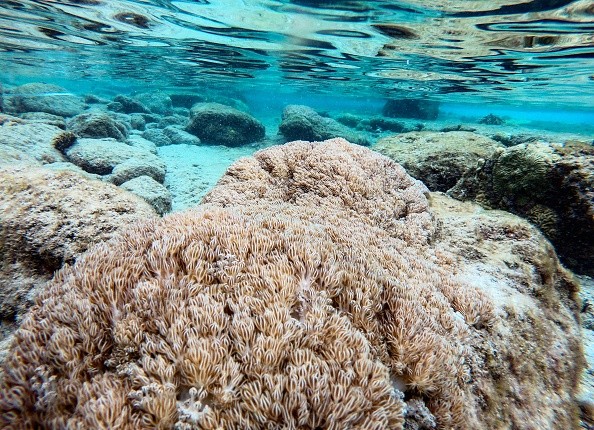Coral reefs are among the most diverse and productive ecosystems on Earth, but they are also among the most vulnerable to climate change.
One of the main threats to coral reefs is marine heatwaves, which can cause corals to bleach and die.
Bleaching occurs when corals expel their symbiotic algae, which provide them with food and color, in response to stress from high water temperatures.
However, not all coral reefs are equally affected by marine heatwaves.
Some reefs may have natural protection from local ocean processes that can moderate the heat stress or provide additional nutrients.
A new study by researchers from King Abdullah University of Science and Technology (KAUST) and their collaborators has revealed how a Pacific island reef was saved by an ocean current during one of the strongest El Niño events ever recorded.
How El Niño affects coral reefs
 (Photo : YURI CORTEZ/AFP via Getty Images)
(Photo : YURI CORTEZ/AFP via Getty Images)

El Niño is a periodic climate phenomenon that occurs when the trade winds that blow across the tropical Pacific Ocean weaken or reverse, causing warm water to pile up in the eastern Pacific and altering the weather patterns around the world, as per Phys.org.
El Niño can have both positive and negative effects on coral reefs, depending on their location and exposure.
For example, El Niño can reduce the frequency and intensity of tropical cyclones, which can damage coral reefs by breaking or smothering them.
El Niño can also increase rainfall and cloud cover, which can lower water temperatures and reduce solar radiation, both of which can benefit corals.
However, El Niño can also increase water temperatures and reduce nutrient availability, both of which can harm corals.
High water temperatures can trigger coral bleaching, while low nutrient levels can limit coral growth and recovery.
El Niño can also alter ocean currents and circulation, which can affect the transport of heat, nutrients, and larvae.
Also Read: How Will Coral Reefs Survive a Warming Planet?
How a Pacific island reef survived El Niño
The researchers focused on Palmyra Atoll, a remote island in the central Pacific Ocean that hosts a pristine coral reef ecosystem, as per KAUST Discovery.
Palmyra is located about 700 km north of the equator, where El Niño typically causes severe coral bleaching.
However, during the 2015-2016 El Niño, which was one of the strongest on record, Palmyra's reefs showed minimal signs of bleaching, while nearby equatorial islands such as Kiritimati and Jarvis suffered massive coral mortality.
The researchers used satellite data, ocean models, and field observations to investigate how Palmyra's reefs escaped the fate of their neighbors.
They found that Palmyra was exposed to a unique ocean process that provided a lifeline to its corals.
This process involved the strengthening of the North Equatorial Counter Current (NECC), an eastward-flowing current that hits Palmyra's western shores.
The NECC brought cooler and nutrient-rich water from the western Pacific to Palmyra, creating an upwelling zone around the island.
This upwelling lowered the water temperature by about 2°C and increased the chlorophyll concentration by about 50%, compared to surrounding waters.
The cooler and more productive water reduced the heat stress and enhanced the food supply for Palmyra's corals, allowing them to survive and thrive.
Natural refuge for coral reefs
The study has important implications for our understanding and conservation of coral reefs in a changing climate.
It reveals a natural mechanism that can buffer coral reefs from marine heatwaves, which are expected to become more frequent and intense due to global warming.
It also identifies Palmyra as a potential refuge for coral biodiversity and resilience in the Pacific Ocean.
The researchers suggest that similar ocean processes may occur in other regions and seasons, creating other natural refuges for coral reefs.
They also propose that artificial upwelling could be used as a potential intervention strategy to mitigate coral bleaching in some locations.
Related article: Scientists are Weeding Coral Reefs to Help Lessen the Impacts of Climate Change
© 2024 NatureWorldNews.com All rights reserved. Do not reproduce without permission.




![Roundworms with Short Memories 'Stop Forgetting' When Frozen or Given Lithium [Study]](https://1471793142.rsc.cdn77.org/data/thumbs/full/70295/280/157/50/40/roundworms-with-short-memories-stop-forgetting-when-frozen-or-given-lithium-study.jpg)
